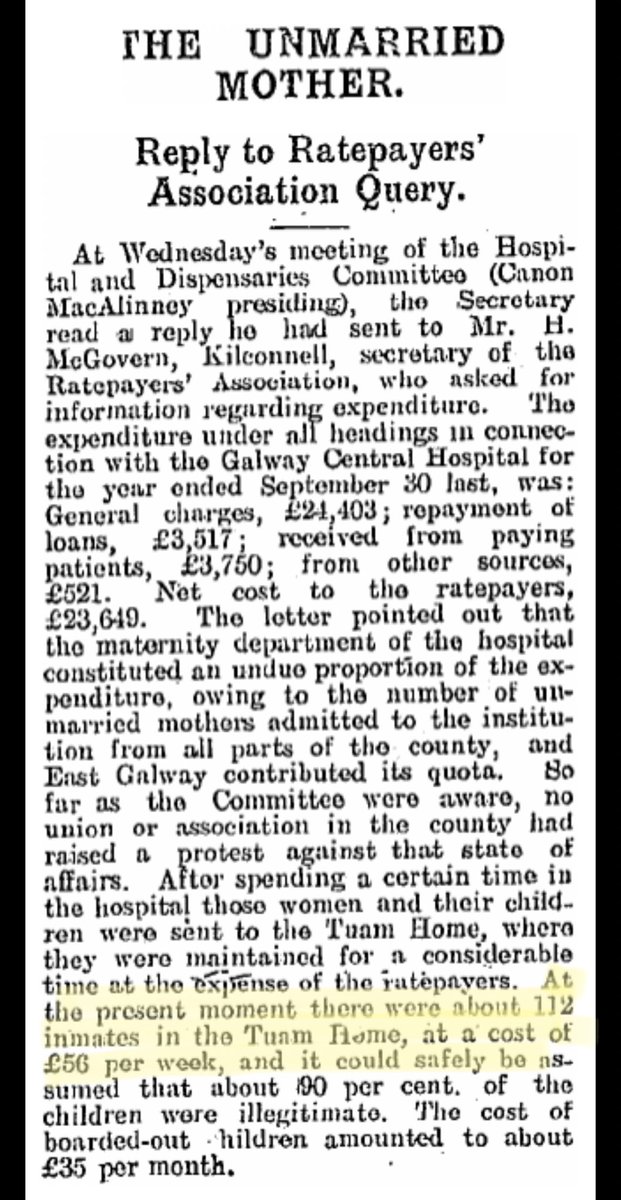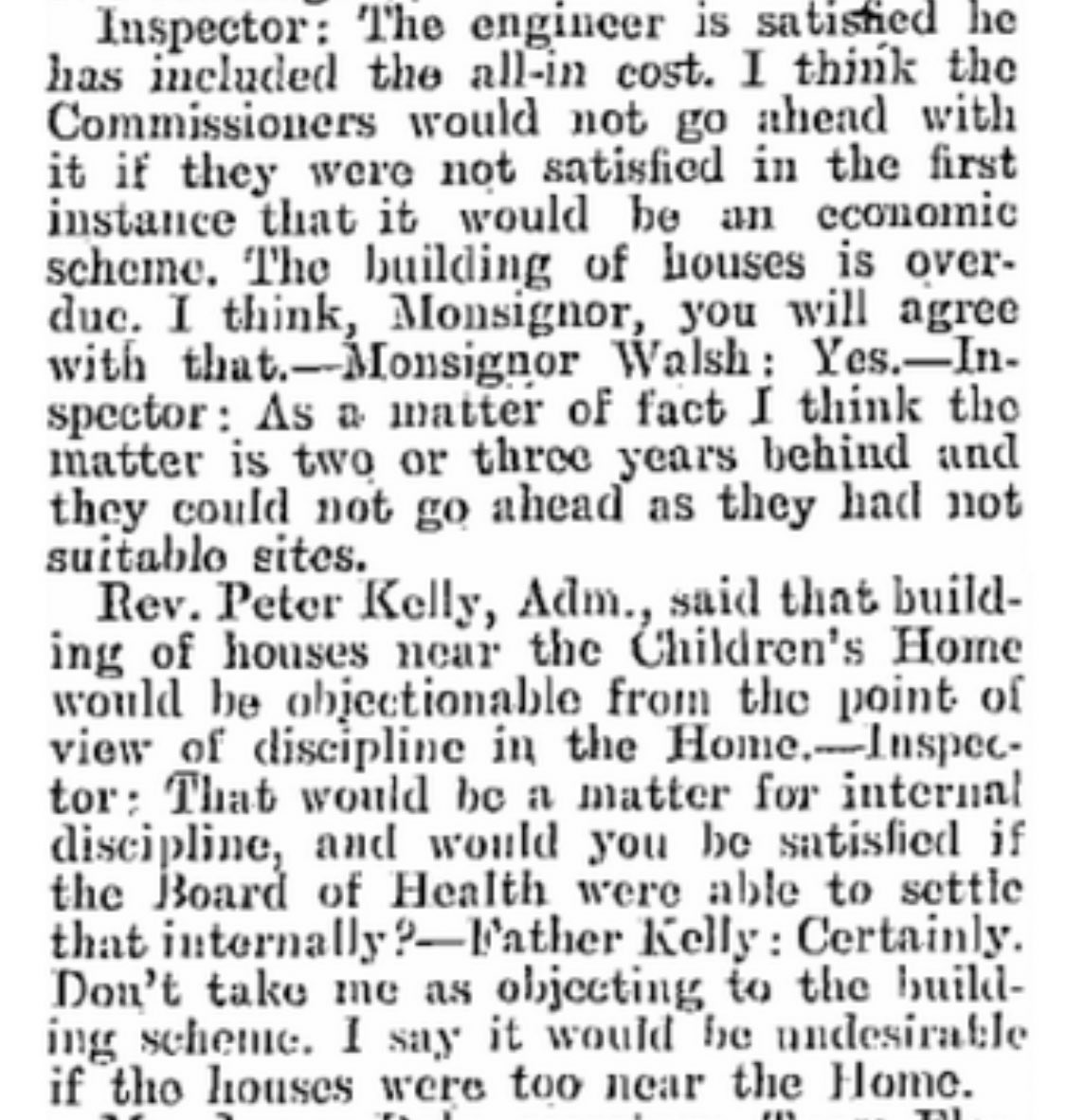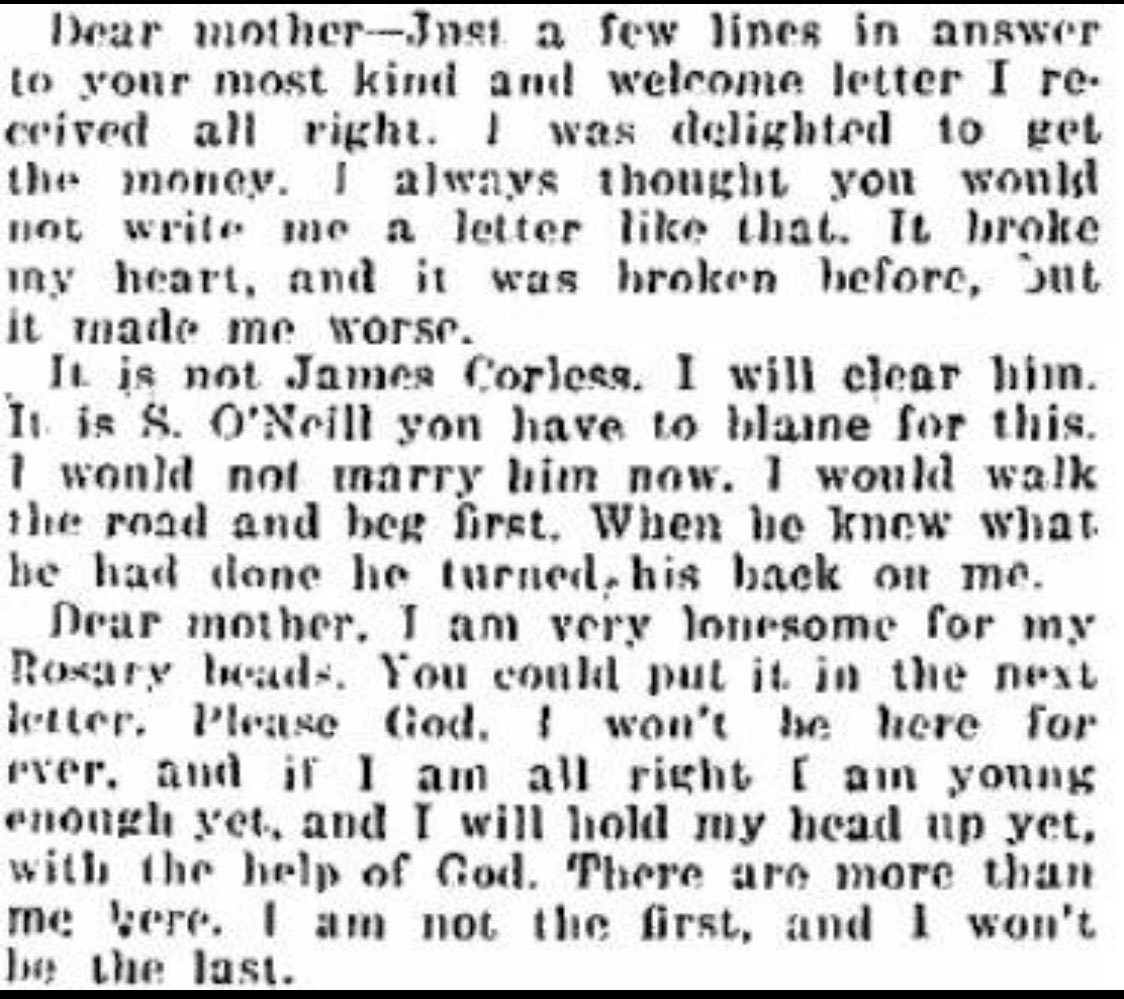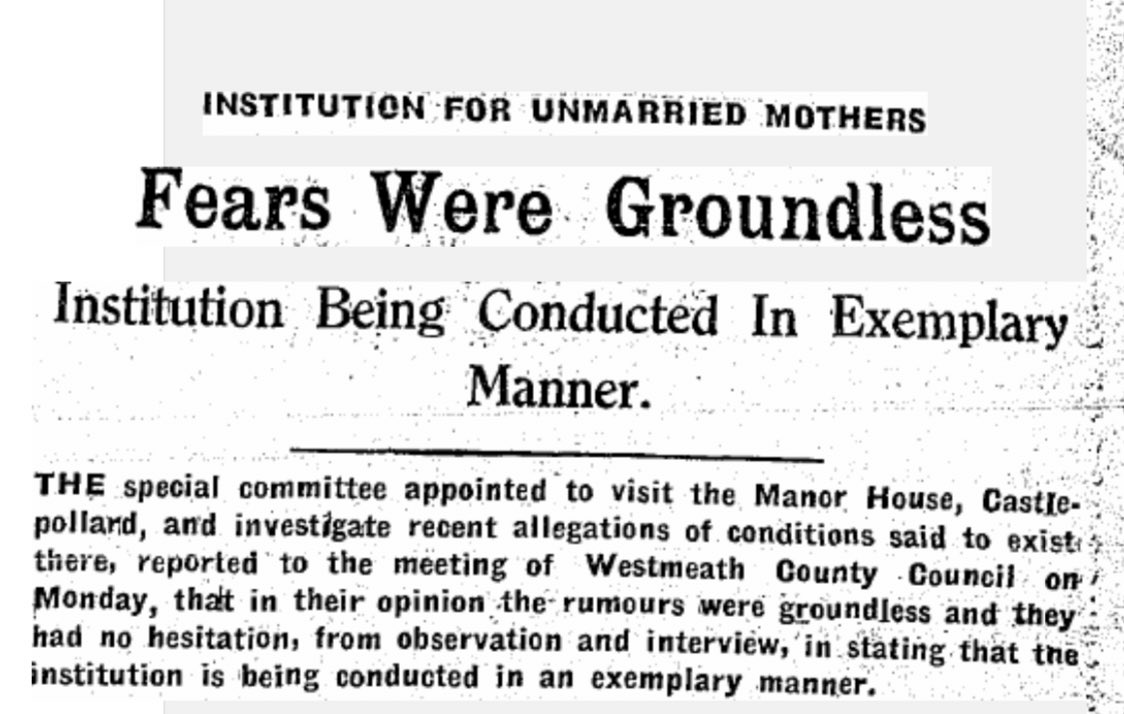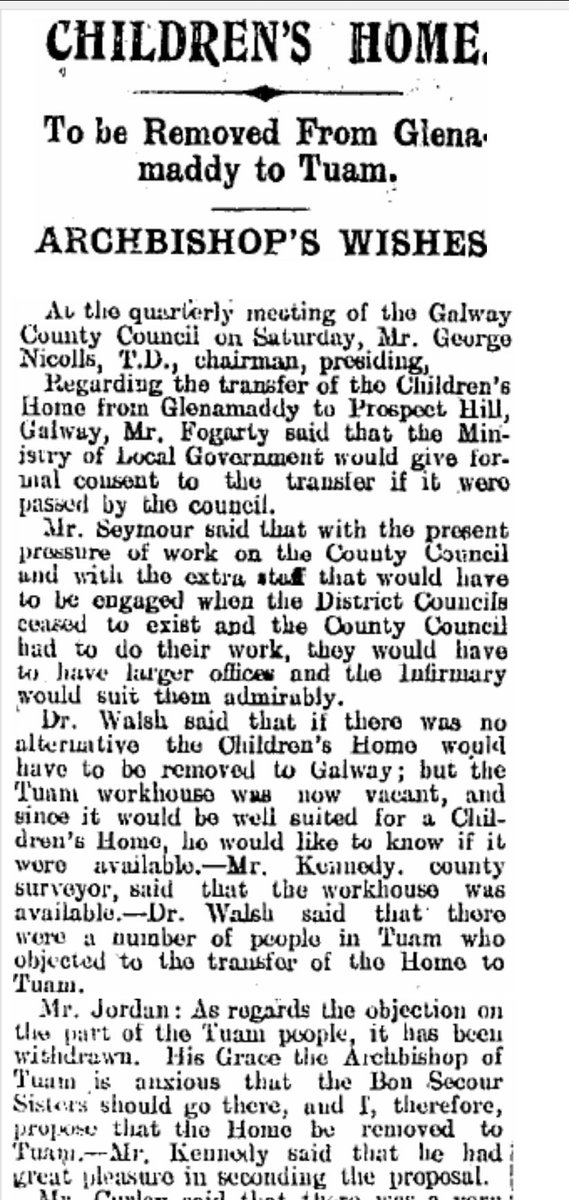I cannot believe what I’m reading. In 1967 an incredible 96.9% of all children born outside of marriage in Ireland were put up for adoption, a horrifying statistic only possible through statewide coercion and pressure. https://twitter.com/mr_considerate/status/1349027337703215113
This is akin to denying a situation of forced labour because the victim had the slim possibility of fleeing the country.
"In order to keep their babies many girls emigrate to England where the help extended to them is greater than in their own country." (Longford Leader, 17/11/1972)
This is whitewash territory. There were dissenting voices in the Dail, from Independents and National Progressive Democrats, &c. In 1953 Jack McQuillan objected to the order to compel unmarried mothers to labour in state institutions for no pay, describing it as “slave labour.” https://twitter.com/aoifegracemoore/status/1349030152920068103
Catherine Corless described the government's webinar with survivors today as a "whitewash, full of political jargon.” https://www.rte.ie/news/mother-and-baby-homes/2021/0112/1189319-survivors-reaction-report/
It should also be remembered that the Taoiseach was first elected to the Dáil representing Cork in 1989.
And that children of unmarried mothers were being buried in unmarked graves in Bessborough in Cork as late as 1990. https://www.irishexaminer.com/opinion/commentanalysis/arid-30828840.html
And that children of unmarried mothers were being buried in unmarked graves in Bessborough in Cork as late as 1990. https://www.irishexaminer.com/opinion/commentanalysis/arid-30828840.html
Dr. Noël Browne on the role of Canon Law regarding so-called “illegitimate children” (Irish Press, 14/2/1975)
Commission: "The principle reason why adoption became so popular after it was formally introduced in 1953 was lack of family and community support for mothers who wished to keep their child."
Again this completely elides the role of the Church and State.
Again this completely elides the role of the Church and State.
Time and again it repeats this narrative in the report: "The delay in introducing legal adoption explains why many Irish women spent such a long time in mother and baby home."
What it fails to mention in these sections is that the State refused to offer Home assistance to the unmarried mother and that this was a way to punish/segregate/isolate them and coerce them into institutions.
These are the classes which are included in the 1927 Relief Commission as receiving Home assistance payments.
Furthermore this Relief Commission recommended that Local Authorities "have power to detain [unmarried mothers] for a period of one year in the case of a first admission, two years [for] second admission and in the case of subsequent admissions for such period as they think fit."
As @dslucey noted in 'The End of the Irish Poor Law?' (2015) they offered this counsel "despite the lack of any legal powers of detention."
And this is how this Commission report reads. What we are dealing with historically is a case of de facto forced adoption, forced labour and incarceration but not de jure. A customary abuse of these citizens' human rights by the Church and State without legal sanction.
And the report seizes on this legal absence to fly through the eye of the needle and minimise the responsibility of those holding all the power.
It's disappointing and upsetting and my heart goes out to everyone affected.
"Responsibility for that harsh treatment rests mainly with the fathers of their children and their own immediate families. It was supported by, contributed to, and condoned by, the institutions of the State and the Churches.. [but they] provided a refuge..."
That's from the *opening page* of the Executive Summary and portrays the Church and State as merely responding to what was wanted across Irish society and that they had no foundational role or power in guiding, influencing and enforcing such cruelty.
S.J. Connolly has noted the role of the Church in influencing this callousness towards unmarried mothers in late 18th century Ireland: "the statutes and regulations laid down for the government of different dioceses make clear that such women were...offenders to be punished."
In the Diocese of Limerick in 1752 a regulation was passed that a woman giving birth to a child outside of marriage and her home parish "is to be remitted to her ordinary pastor to receive condign punishment."
In the Diocese of Achonry in 1759 it was ruled that "no unmarried women was to be churched until after she had been punished publicly in such a way that her disgrace would deter others from the same offence."
Hard to disagree with @catherinegalway here, and it’s well worth watching her full contribution on the report https://twitter.com/catherinegalway/status/1349430552907182083
It says so much about the Irish political system that it takes yet another Independent or minority party TD to get to the heart of the issue over half a century later.
Thomas Kyne (Labour): They are not let out.
Peadar Cowan (Independent): That is absolute brutality.
Dáil Éireann, 1953.
Peadar Cowan (Independent): That is absolute brutality.
Dáil Éireann, 1953.
History is what we choose to remember. In 1969 a memorial mass was held at the former Mother and Baby home in Tuam. Standing near of mass grave of children recently reposed in a repurposed sewage system, they memorialised famine victims and Republican martyrs.
Three decades before this Dr. Rowlette TD reported that 2,030 "illegitimate" children were born in the Free State in 1934 and that 538 had died before their 1st birthday: "That was a mortality rate of about 26%, whilst the mortality amongst ordinary children was about 7%."
"I want the public to know what illegitimate children are costing the ratepayers of Co. Galway." (Tuam Herald, 24/9/1938)
"...opinion is now unanimous that the illegitimate child should not be separated from its mother." (The North Wales Chronicle and Advertiser for the Principality, 12/12/1919)
Catherine Connolly: "It was not the stories that upset me. It is the narrative that is being put on those stories by the powers that be...the conclusions drawn by the commission...tell us that there was no evidence that women were forced to enter mother and baby homes."
"That for me is extraordinary, because it bears no connection to the testimony given by the women and men that came forward, how they could have drawn that conclusion is beyond my capability."
Illegal plans to send unmarried mothers to the Magdalen Asylum, Galway from the County Home in an ambulance, openly discussed at County Board of Health meeting. (Connacht Tribune, 4/12/1926)
Most of these County Homes were put outside the scope of the Commission, which was a considerable mistake as all of these institutions were interconnected and as a whole comprised Ireland's 'architecture of containment.'
"Why don't you call the institutions for unmarried mothers Baby Factories? Most of the girls I knew in the institutions were paid for by the Adoption Board of their counties."
"It's easier not to think of the girl as a human being."
Sunday Independent (16/3/1969)
"It's easier not to think of the girl as a human being."
Sunday Independent (16/3/1969)
"The Commission concluded that there was no evidence of discrimination in relation to decisions made about fostering or adoption of mixed race children...it appears that race was a less important factor in decisions relating to adoption than religion or disability."
The Commission did not look very hard.
This is from a Sunday Independent report in 1968: "the biggest single problem of the local authorities, no more than the adoption societies, is the growing pool of coloured children in the country at the moment."
"It has proved impossible to board out or get adopted a similar number of coloured illegitimates as are born here each year."
"The backlog has now grown to 20, from four-years-old down to toddlers, and it may be that if there is no change of heart among Irish families towards them, they will be placed in the new type of home being contemplated with 'artificial parents'..."
Also look at the language here: "It seems that apart from some 20 coloured babies (none of whom is all black) almost every eligible child in the country found a new home in 1967."
At this point I would have to say that the work of the Commission needs to be thoroughly reviewed by an independent body as it is so flawed that it should not stand as an official narrative.
This is taken from a letter sent to the editor of the Galway City Tribune during the debate on the divorce referendum (1986)
Commission: “They were not ‘incarcerated’ in the strict meaning of the word....[but] they thought they were. They were free to leave...”
This is insidious and inconsistent.
This is insidious and inconsistent.
They were described as “inmates” who had been “sent” from the hospital. (Connacht Tribune, 1927)
They knew they were being confined to the institution, as did the Govt, the Council, the Diocese, their families and the public at large.
They knew they were being confined to the institution, as did the Govt, the Council, the Diocese, their families and the public at large.
"...houses near the Children’s Home would be objectionable from the point of view of discipline in the Home." - Connacht Sentinel, (24/7/1934)
Discipline in “the Home.” This is the language of a prison planner.
Discipline in “the Home.” This is the language of a prison planner.
“Please God, I won’t be here forever.” A letter sent from Mary Ellen Garvey (18) from the Children's Home, Tuam, to her mother. (1931)
Mary Josephine Garvey aged 4 1/2 months died in the Children's Home, Tuam on 25/3/1931 from Influenza.
Commission: “Crowding of vulnerable children allowed mini epidemics to occur of many infectious diseases.”
Note the passive voice.
Note the passive voice.
The Church and State had so much power in Irish society, and those whose lives they tried to control had so little, that none this abuse, segregation, arbitrary detentions, renditions, forced adoptions or, compelled labour needed legal sanction. This was an unfettered tyranny.
The Commission seizes on this lack of legal authority as an absence of proof of coercion, when in reality it’s overwhelming evidence of such a gross abuse of power that they never even considered the possibility that they would be challenged for what they doing in court.
Richard Devane SJ: “...the [Catholic Corporatist] revolution has already taken place, when, in our new Constitution, we rejected the individual as the social unit and established the family unit in its place.” (1939)
@PresidentIRL: “It is important, too, to recognise, and with what consequences, how a newly independent State was captured by a judgemental, authoritarian version of Church/State relations that sought to be the sole and ultimate arbiter of morality.” https://www.rte.ie/news/mother-and-baby-homes/2021/0115/1189881-president-mother-and-baby/
If you get the chance you should listen back to @rteliveline over the past few days. https://twitter.com/aifreckle/status/1350089011793186816
@JessNoelleSoul: “My family sent my grandmother to Castlepollard, thinking she can have her Black child that can be sent off to an orphanage and we’ll never have to think about this again...here I am, talking about it.”
Great work as ever by @CaelainnH https://www.nytimes.com/2021/01/15/world/europe/ireland-mother-baby-homes-mixed-race.html
Great work as ever by @CaelainnH https://www.nytimes.com/2021/01/15/world/europe/ireland-mother-baby-homes-mixed-race.html
Archbishop Martin: “they found themselves on the front line of this...”
I’m not surprised to find the Church hierarchy seizing on the ahistorical conclusions of the report. They are presented as a passive institution providing a State service. https://www.rte.ie/news/mother-and-baby-homes/2021/0117/1190303-mother-and-baby-homes/
I’m not surprised to find the Church hierarchy seizing on the ahistorical conclusions of the report. They are presented as a passive institution providing a State service. https://www.rte.ie/news/mother-and-baby-homes/2021/0117/1190303-mother-and-baby-homes/
The convenient omission of Church influence on Irish society is troubling.
Rather than “finding themselves on the frontlines” they often demanded it, or stated their intentions, which were then put into play by politicians and civil servants across the State.
Rather than “finding themselves on the frontlines” they often demanded it, or stated their intentions, which were then put into play by politicians and civil servants across the State.
In 1925 Galway County Council were debating where to move the Mother and Baby home. They had originally proposed Prospect Hill. But a number of councillors at the meeting suggested Tuam instead, solely because it aligned with the Archbishop of Tuam’s wishes.
Mr. Jordan: “His Grace the Archbishop of Tuam is anxious that the Bon Secours Sisters should go there, and I, therefore propose that the Home be removed to Tuam...” (1925)
Good to see the Minister is in agreement about the reports’ denial of coercion by relying on the lack of positive law re: forced adoption and confinement in Mother and Baby homes. https://twitter.com/gavreilly/status/1351104013673127938
“The authors seem to have no ability to discuss hegemony – that is how people are born into and brought up in cultural systems where their opportunities to be informed and make decisions are tightly controlled and severely limited by those in power.” https://www.irishexaminer.com/opinion/commentanalysis/arid-40209191.html
This example of unprofessional conditional language in the report reminds me of anti-reparations rhetoric in the U.S. Here it is an attempt to deflect from the powerful institutions responsible onto a “generation”, in line with the report’s summary of blaming “society.” https://twitter.com/maeveorourke/status/1354565835348725761
I think its inclusion says a lot about the sort of literature/argumentation the author was au fait with.

 Read on Twitter
Read on Twitter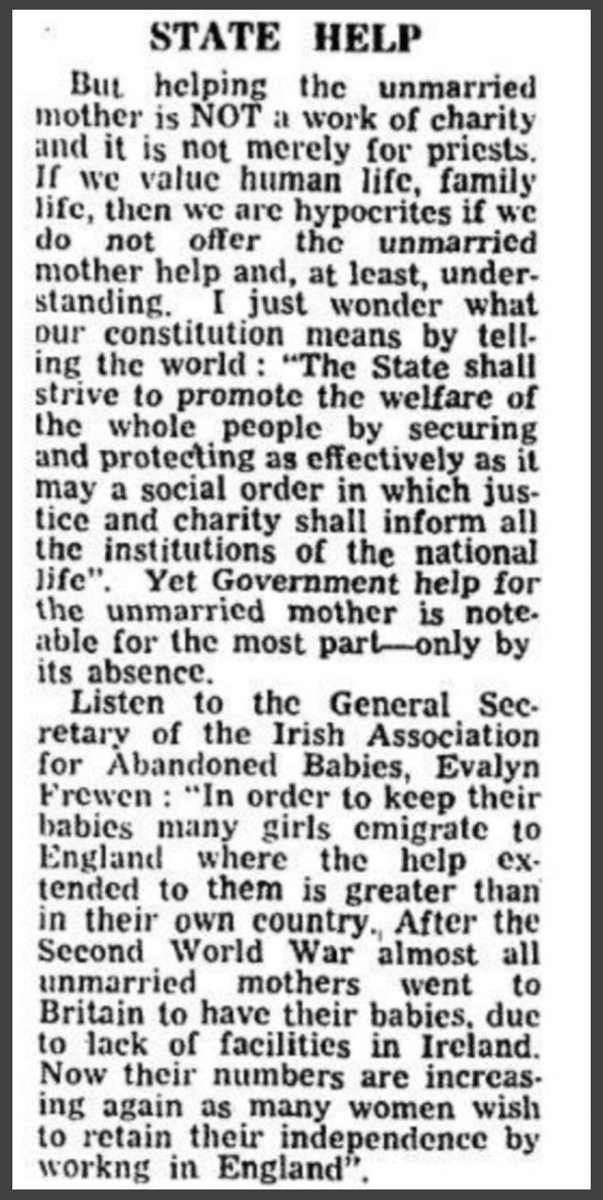
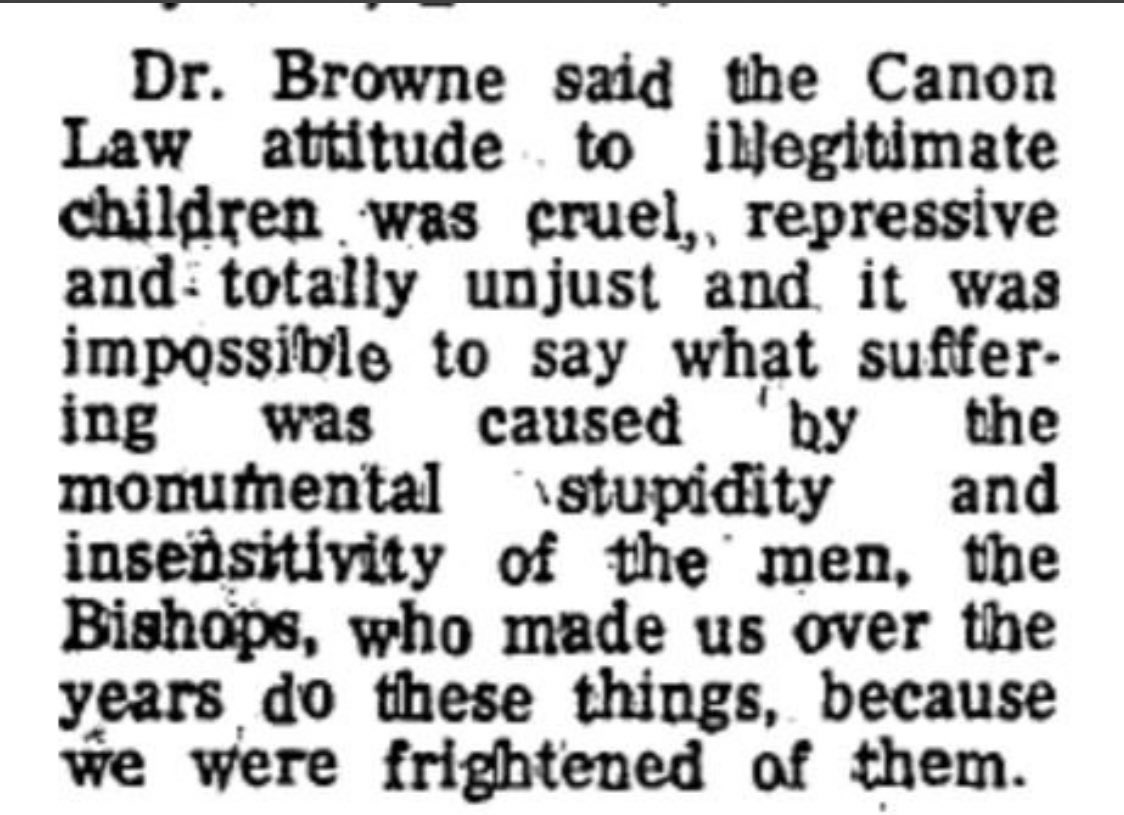
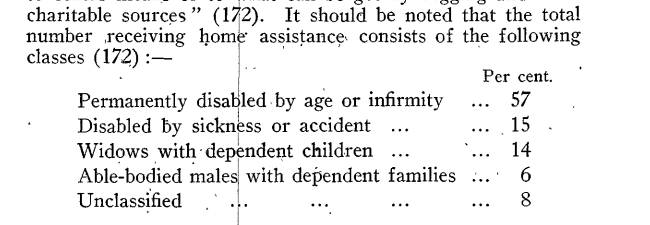



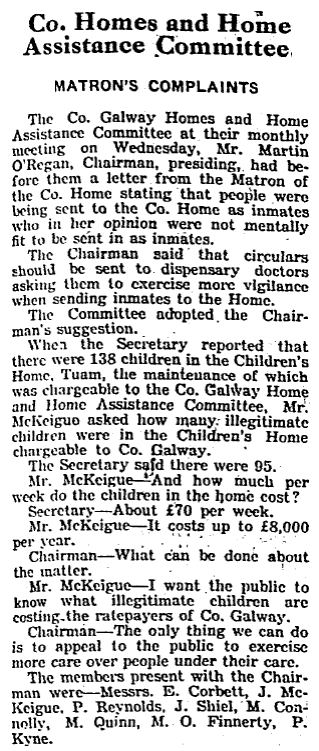
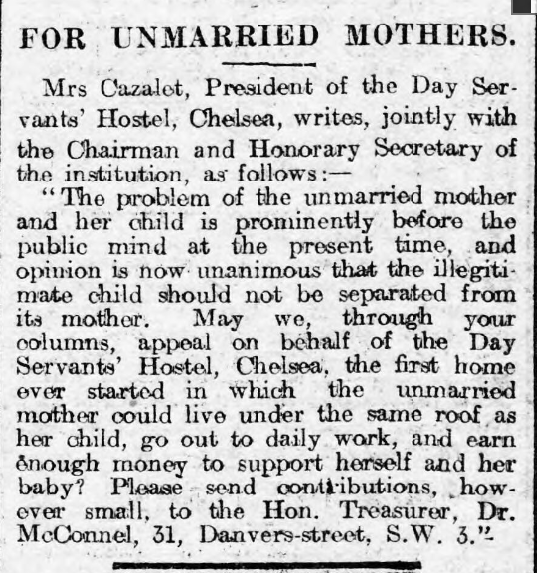
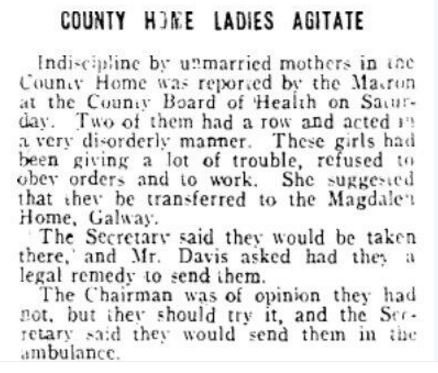

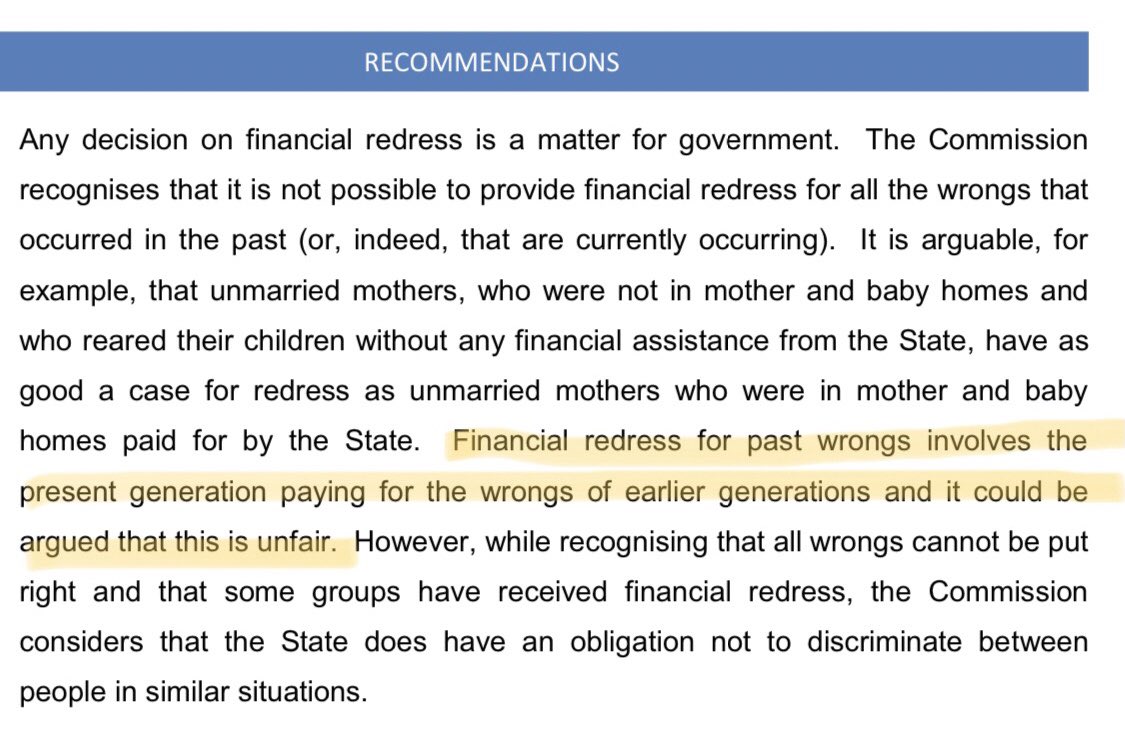

![Commission: “They were not ‘incarcerated’ in the strict meaning of the word....[but] they thought they were. They were free to leave...”This is insidious and inconsistent. Commission: “They were not ‘incarcerated’ in the strict meaning of the word....[but] they thought they were. They were free to leave...”This is insidious and inconsistent.](https://pbs.twimg.com/media/EruznEiXcAAcmtz.jpg)
